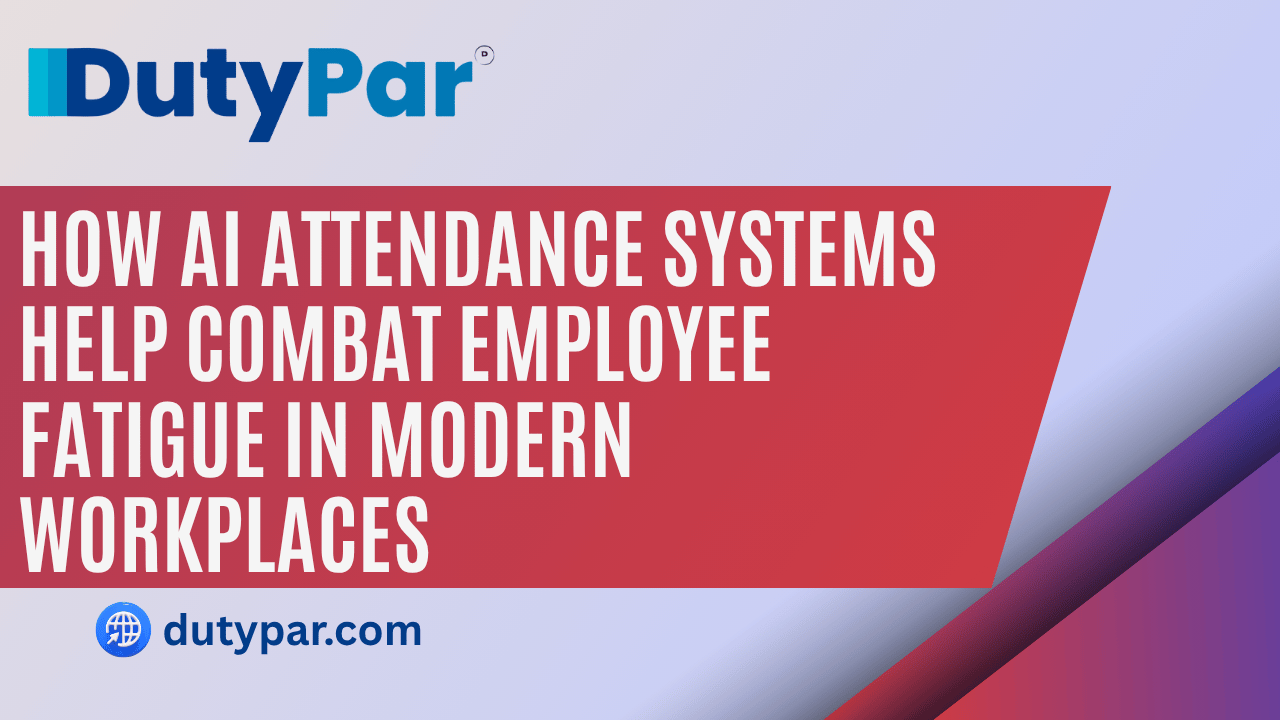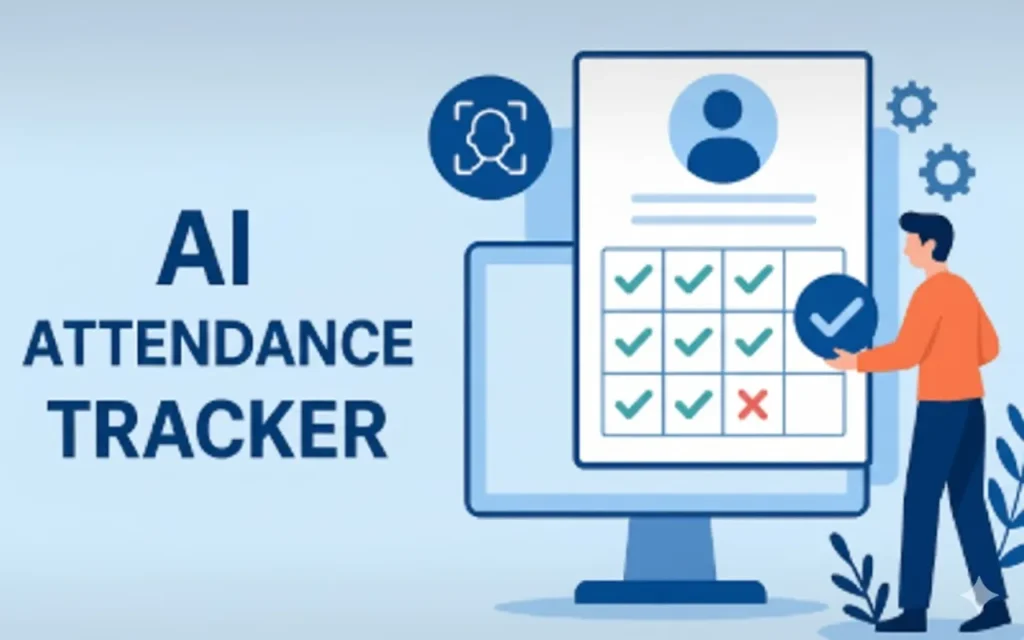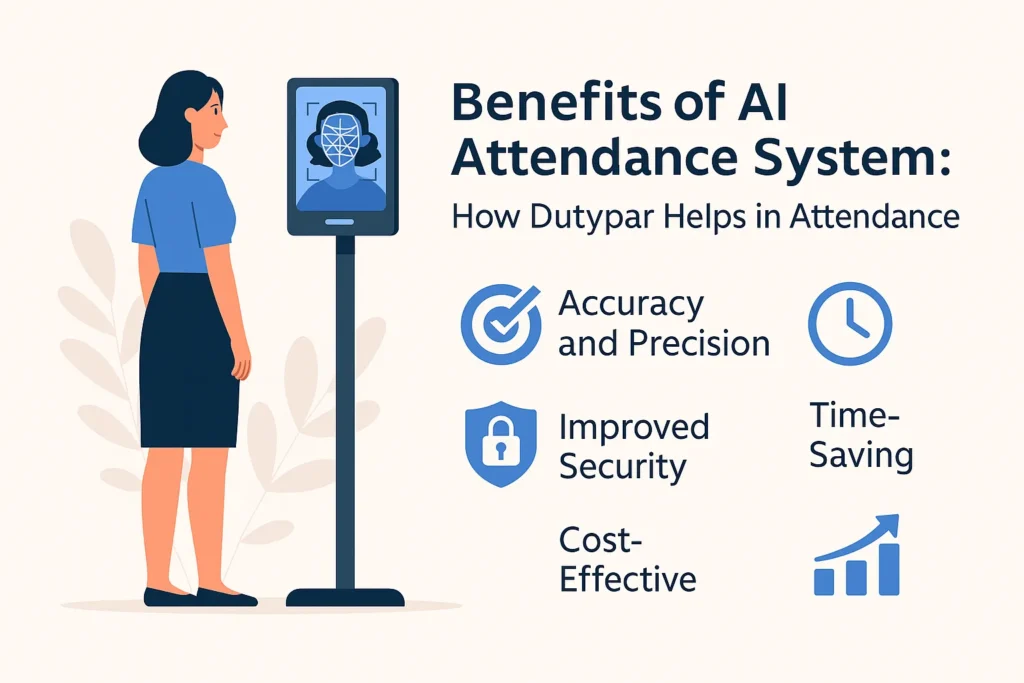
Table of contents
- What Makes AI Attendance Systems Different
- The Hidden Link Between Attendance Data and Employee Fatigue
- How Smart Tracking Prevents Burnout
- Real-Time Insights That Make a Difference
- Building a Healthier Work Culture
- Measuring the Impact on Productivity
- Practical Features That Address Fatigue
- Key Benefits Comparison
- Getting Started With AI Attendance Solutions
- Moving Forward With Smart Workforce Management
In today’s settings, employee tiredness has turned into a silent epidemic. Employers struggle to keep their teams motivated, workers feel exhausted, and production declines. Interestingly, though, AI attendance systems may be able to assist in resolving this issue. These intelligent technologies do more than simply monitor employee attendance. They provide managers with important information on work habits that lead to employee exhaustion.Employee fatigue has become a silent epidemic in today’s workplaces. Workers feel drained, productivity drops, and companies struggle to keep their teams energized. But here’s something interesting: AI attendance systems can actually help solve this problem. These smart tools do more than just track who shows up to work. They give managers valuable insights into work patterns that contribute to employee fatigue.
Let’s explore how these systems work and why they matter for your team’s wellbeing.
What Makes AI Attendance Systems Different
Time and attendancetraditional systems only capture when someone clocks in and out. AI attendance systems take several additional strides. They comb through patterns, spot trends and help managers make smarter choices about workforce management. These systems are equipped with facial recognition, biometric data and mobile applications to monitor attendance on their own. No more manual punch cards or spreadsheets in which employees set their shifts. The A.I. does the rest and decides what it has learned from the data. That means fewer errors — and that you can have a more accurate recording of how your team works.
The Hidden Link Between Attendance Data and Employee Fatigue
What most managers don’t know, however, is that their workers’ attendance records carry clues when the workers are fatigued. An A.I. attendance system may be able to read such clues and tip you off before small problems turn big. Consider this scenario. An employee comes in earlier and stays later each week. If it is a gradual one, the manual tracking could overlook it. But AI notices it immediately. Such a dynamic is frequently a sign that staff are worn down. They feel they have to work extra hour above the end of their day in punishing themselves to exhaustion.
AI systems are also logging break patterns. When workers miss lunch breaks or work through rest modules, the system pings it. These factors also lead to fatigue. Indeed, research shows that workers who forgo breaks from labor do poorer-quality work and feel more fatigued than workers who take time off. It can also notice shift patterns that disturb sleep cycles. Workers’ fatigue is reinforced by the pattern of rotating shifts, split, or irregular hours.
How Smart Tracking Prevents Burnout

When it comes to employee fatigue in particular, prevention is more effective than treatment. AI attendance systems provide managers with the resources they need to stop burnout before it starts. When an employee works longer hours than is considered healthy, the system notifies them. It keeps track of days in a row that are worked nonstop. It keeps track of how much overtime each team has accrued. These characteristics enable managers to take early action and prevent employee fatigue.
Many companies set up automatic rules within their AI attendance systems. For example, the system might block overtime requests when an employee has already worked a certain number of extra hours that week. This prevents workers from pushing themselves too hard.The data also helps with schedule optimization. AI can suggest better shift rotations that give employees adequate rest between work periods. It can recommend team adjustments to balance workloads more evenly. These proactive steps reduce employee fatigue across the entire organization.
Real-Time Insights That Make a Difference
One of the greatest benefits of AI attendance systems is instant reporting. Managers don’t have to wait until the end of the month to identify issues. They notice problems as they evolve.Dashboard screens indicate which teams work the most hours. They flag employees teetering on burn out. They monitor attendance trends that signal distress or disconnect. Its instant visibility enables rapid responses.
As an example, if the system reports a department working overtime for two weeks straight, managers can intervene. They may bring in temporary assistance, or reallocate responsibilities, or shift deadlines. This series of interventions keeps employee fatigue from turning into a crisis.It also assists with compliance. Labor laws mandate some breaks and maximum hours. AI attendance systems auto-flag violations This shields workers and businesses from overtime lawsuits.
Building a Healthier Work Culture
AI attendance systems are about more than tracking time. They help define a culture of employee wellbeing. When employees witness their employer logging work and actively managing burnout, they know they are cared for and shielded.The transparency these systems provide build trust. Workers can access their own data and work patterns. This awareness helped them to make better decisions about their income-life balance. They may notice they’ve burned too many late nights and pull back.
Managers can use the data to have meaningful conversations with their teams. Instead of guessing why someone seems tired, they have concrete information. They can say, “I noticed you’ve worked overtime for three weeks. Let’s talk about your workload.” This approach shows genuine concern for employee fatigue.The systems also support flexible work arrangements. They track productivity regardless of location or specific hours worked. This flexibility helps employees manage their energy levels better and reduces fatigue from rigid schedules.
Measuring the Impact on Productivity

Businesses using AI attendance systems to combat burnout Deliver measurable outcomes. The data demonstrates that stewardship of exhaustion makes your business better.Prosperity multiplies when labor receives its due repose. This AI system keeps that from happening by keeping you from overworking. Squads get through missions faster and more effective when they are not burnt out. It’s better because fatigued employees error less.
Absenteeism plummets when businesses aggressively control burnout. Well-rested and appreciated workers take less sick days, believe me. The AI system gets there first, and stops the health issues that cause long term sick leaves.Employee retention improves as well. Employees remain at organizations that care about them. And that apparent attempt to avoid employee burnout with clever attendance software reminds employees their well-being is important.
Practical Features That Address Fatigue
Today’s AI attendance solutions have unique anti-fatigue features. These tools simplify the job for managers to guard teams.Fatigue risk scoring compares each employee’s schedule to research-based fatigue factors. It computes a risk score and suggests interventions when scores become excessive. This science eliminates guesswork from taming employee burnout. Automated schedule optimization proposes shift patterns which reduce fatigue. The AI takes into account things such as consecutive work days, shift length and recovery time between shifts.
It generates schedules that maintain teams productive while safeguarding their health. Integration with your other HR systems offers a holistic view of employee wellness. When attendance data merges with performance and health metrics, managers discover how exhaustion impacts their employees. This 360 perspective results in smarter choices.
Key Benefits Comparison
| Benefit Area | Traditional Systems | AI Attendance Systems |
|---|---|---|
| Fatigue Detection | Manual observation only | Automatic pattern recognition |
| Response Time | Days or weeks | Real-time alerts |
| Data Accuracy | Prone to human error | Highly accurate tracking |
| Schedule Optimization | Manual planning | AI-powered suggestions |
| Compliance Monitoring | Time-consuming reviews | Automatic violation flagging |
| Employee Insights | Limited visibility | Comprehensive analytics |
Getting Started With AI Attendance Solutions
You don’t have to tear your workplace apart to install an AI attendance system. Most solutions tie into existing payroll and HR systems. And while the setup may take a couple of weeks, employees adjust rapidly to the new technology. Begin by auditing your most significant problems with worker exhaustion. Do certain departments find it harder than others? Are there times of year when overwork is a problem? Knowing your specific needs guides you select the right AI attendance system features.
Educate your managers on how to leverage the system’s insights. They need to know how to interpret the information and act. Even the best AI attendance system only does you good if managers respond to its insights. Talk to employees about why you’re instituting the system. Stress that the objective is safeguarding their health and avoiding burnout. When workers see what’s in it for them, they welcome the new technology instead of rejecting it.
Moving Forward With Smart Workforce Management
Employee fatigue costs companies billions in lost productivity, healthcare expenses, and turnover. AI attendance systems offer a practical solution to this expensive problem. They provide the visibility and tools managers need to protect their teams from burnout. The technology continues to improve. Future AI attendance systems will offer even more sophisticated fatigue detection and prevention features. Companies that adopt these tools now position themselves as leaders in employee wellbeing.
Your workforce is your most valuable asset. An AI attendance system helps you protect that asset by preventing employee fatigue before it damages productivity and morale. The investment pays for itself through improved performance, reduced absenteeism, and higher retention rates.
